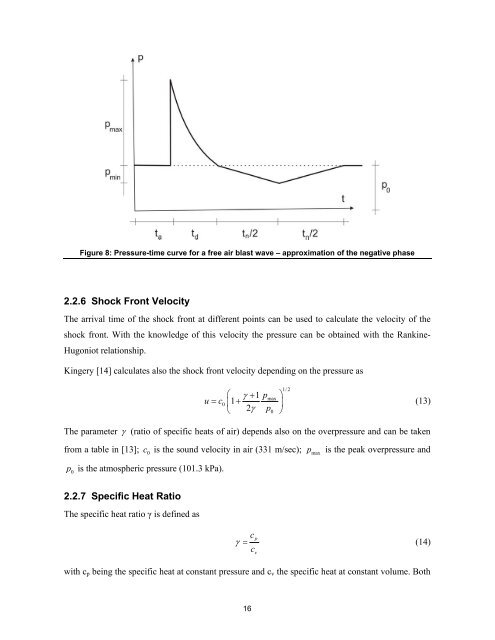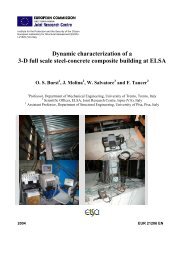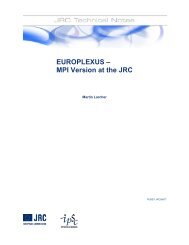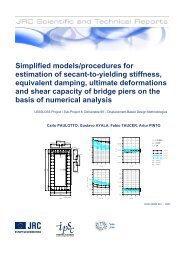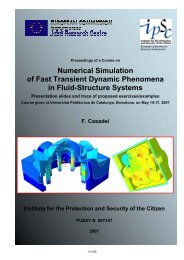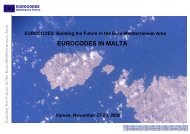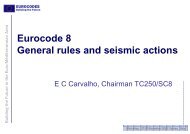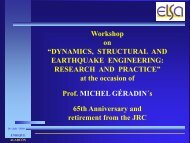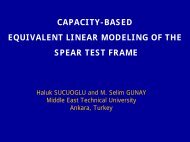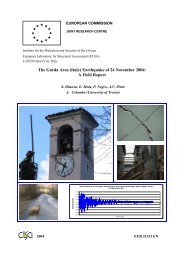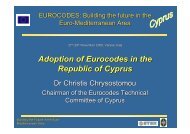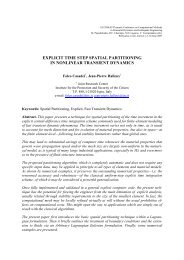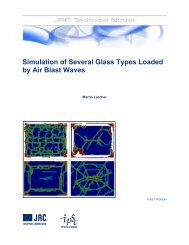Simulation of the Effects of an Air Blast Wave - ELSA - Europa
Simulation of the Effects of an Air Blast Wave - ELSA - Europa
Simulation of the Effects of an Air Blast Wave - ELSA - Europa
- No tags were found...
Create successful ePaper yourself
Turn your PDF publications into a flip-book with our unique Google optimized e-Paper software.
Figure 8: Pressure-time curve for a free air blast wave – approximation <strong>of</strong> <strong>the</strong> negative phase2.2.6 Shock Front VelocityThe arrival time <strong>of</strong> <strong>the</strong> shock front at different points c<strong>an</strong> be used to calculate <strong>the</strong> velocity <strong>of</strong> <strong>the</strong>shock front. With <strong>the</strong> knowledge <strong>of</strong> this velocity <strong>the</strong> pressure c<strong>an</strong> be obtained with <strong>the</strong> R<strong>an</strong>kine-Hugoniot relationship.Kingery [14] calculates also <strong>the</strong> shock front velocity depending on <strong>the</strong> pressure as⎛ γ + 1 pu = c0⎜1+⎝ 2γpmax0⎞⎟⎠1/2(13)The parameter γ (ratio <strong>of</strong> specific heats <strong>of</strong> air) depends also on <strong>the</strong> overpressure <strong>an</strong>d c<strong>an</strong> be takenfrom a table in [13]; c 0is <strong>the</strong> sound velocity in air (331 m/sec);p0is <strong>the</strong> atmospheric pressure (101.3 kPa).2.2.7 Specific Heat RatioThe specific heat ratio γ is defined asccpmaxis <strong>the</strong> peak overpressure <strong>an</strong>dpγ = (14)with c p being <strong>the</strong> specific heat at const<strong>an</strong>t pressure <strong>an</strong>d c v <strong>the</strong> specific heat at const<strong>an</strong>t volume. Bothv16


